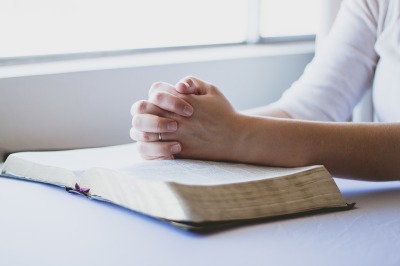Proof that prayer works

Can prayer be scientifically measured? In 1872, English intellectual Francis Galton, cousin of Charles Darwin, attempted to test the effects of prayer in a famous experiment. He hypothesized that the royal family, whose health the faithful prayed for every Sunday in Anglican parishes, would live much longer than the rest of the British population.
He found that the contrary was true, and concluded that prayer doesn’t work.
The royal diet and lifestyle did not factor into his equation, nor did Galton question the hierarchical theology of God favoring those privileged enough to command an entire nation to pray for them.
In more recent times, Richard Dawkins has hailed the “Great Prayer Experiment” as the definitive proof against prayer efficiency. The Experiment was a 2006 study conducted by Herbert Benson and team, showing that cardiac bypass patients who received prayer did not suffer from less complications after surgery than those who didn’t. In fact, the opposite was true!
What Dawkins doesn’t tell you in his book The God Delusion was that not all who prayed were Christians. A significant number of them belonged to Silent Unity, a New Thought group with unorthodox views on prayer. One of their leaders, James Dillet Freeman, has said that your purpose in praying “is to quicken into activity the creative processes that lie at the root of being and out of which the world takes shape.”
Mixing prayer methods like this when trying to measure prayer is a bad move. Other prayer studies that only included born-again Christians have received more positive results. But there’s a serious flaw with these kinds of prayer studies: they cannot guarantee that the control group they use don’t receive prayer. When you’re in a religious country, that’s impossible to guarantee. Thus, if weird or no differences emerge between patients who “receive prayer” and those who “don’t receive prayer”, it might be because all of them receive prayer!
I suggest another strategy. Over the last year, I’ve collected examples of people being cured after prayer in a way that medical science cannot explain. There are a lot of these cases. Some of them can be found in works like Testing Prayer by Candy Gunther Brown and Miracles by Craig Keener. They sometimes get published in scientific journals like this one. I’ve also spoken to people in my native country of Sweden, asking for their permission to confirm their stories with their medical records.
I’ve found blind people that see, deaf people that hear, cancer patients who were told that they were about to die that instantly got well, as well as allergies, brain damage, blood diseases and ulcers disappearing as people pray. I’ve also spoken to a man who was diagnosed with ALS, a fatal motor neuron disease, in 1987 but lives a healthy life today after a pastor prayed for him at the hospital. The doctors were sure that their diagnosis was correct, and could not explain his recovery.
These cures are too radical to be explained away by placebo or spontaneous remission. They are SICAPs: Scientifically Inexplicable Cures After Prayer. Such phenomena, I argue, are excellent candidates for miracles. Hypothetically, if God would heal someone in response to prayer, it will look exactly like a SICAP.
A naturalist (someone who does not believe in miracles) will argue that SICAPs are the result of unknown natural phenomena. Science is evolving, and what’s inexplicable today might be super obvious in the future. But here’s the problem. The naturalist cannot say that most SICAPs are the result of these unknown natural phenomena – that leaves room for some miracles to exist. No, all SICAPs must be natural phenomena. And that’s very unlikely. One could even call it miraculous.
The SICAPs we observe are simply too diverse to be easily dismissed as a scientific oversight. Furthermore, many of them occur at the very moment someone prays, and several have connections to prophetic visions or other spiritual experiences. Attributing both that and an inexplicable cure happening simultaneously is stretching naturalism to its limits.
On top of this, we generally view unknown explanations as quite unlikely. Why is the day generally hotter than the night? Is it because of the sun, or some other explanation we haven’t come up with yet? Both are theoretically possible, but I think we all know what’s more likely.
Thus, I conclude that affirming the existence of SICAPs logically leads us to affirming the existence of miracles. Miracles that happen in response to prayer. Who said that faith and science are opposed to each other?
Micael Grenholm is the editor-in-chief for Pentecostals & Charismatics for Peace & Justice and pastor of Mosaik Church in Uppsala, Sweden.




















